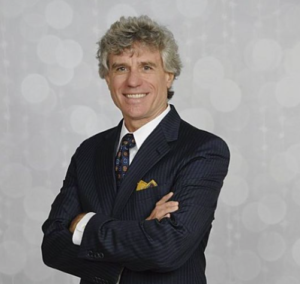 This time of year, I spend time with many principals asking them about their plans for the upcoming school year to strengthen the most important variable that increases student achievement—instruction. After all, it is the most critical time of the year for making the decisions that will ultimately determine the future success of a school. Miss this opportunity and you will have to wait another entire year for it to come around again.
This time of year, I spend time with many principals asking them about their plans for the upcoming school year to strengthen the most important variable that increases student achievement—instruction. After all, it is the most critical time of the year for making the decisions that will ultimately determine the future success of a school. Miss this opportunity and you will have to wait another entire year for it to come around again.
Based on my observations, three different types of principals are evident this time of year. They are Busy Principal #1, Busy Principal #2, and Productive Principal. Each is well-intentioned but only one leads to the path to success.
Busy Principal #1 is consumed with the current day-to-day operations of the school and hasn’t had time to think deeply about the instructional decisions that will impact student achievement in the upcoming year. Let’s face it, leading a school is chaotic and testing season only adds to the fray. These busy principals are not thinking too far into the future other than examining their staffing numbers and contemplating personnel issues such as who will be returning, who will be departing, and who will be moved to a different position in an attempt to increase the quality of instruction through personnel changes.
Busy Principal #2 appears to be on the other side of the spectrum. They, too, are strategizing personnel moves but also have already made their decisions about the major processes they will put in place to improve instruction for the upcoming year. You can hear the excitement in their voices as they are eager to get started. Some have even scheduled or begun the trainings. They are off and running!
When working with a Busy Principal #2, I often hesitate to ask what led them to selecting their new initiatives because I know they already have their minds made up. I know that they often have based their decision on something they have heard at a conference, something that another school has done, or something based on this year’s hot book, topic, or buzzword. While each of these decisions is well-intentioned, I always wonder if the initiative—even if implemented well—will actually solve their most pressing problem. Unfortuna tely, it often doesn’t. In this case, busyness becomes the illusion of change. Lots of excitement, materials, and initial training but ultimately little impact.
tely, it often doesn’t. In this case, busyness becomes the illusion of change. Lots of excitement, materials, and initial training but ultimately little impact.
Productive Principals are different. Before these principals even consider a new initiative they pause to clearly identify the problems that, if solved, would give them the results they desire. Charles Kettering, the former head of research for GM, wisely said “a problem well-stated is half-solved.” All principals would be better off if they heeded this advice.
Effective decision-making does not begin with what I refer to as a “shopping trip” whereby principals browse and select from the plethora of interventions that exist without first considering their most critical needs. It begins with a deliberate, thorough and less-busy process that includes clearly identifying a critical problem to be solved and determining the root causes of this problem before “going shopping.”
Busy is not always productive. Productive is not always trendy or flashy. To solve your most critical problems it is often better to go slow to go fast.
Will your decisions align with your most critical problems? Your future results depend on it.
(You can read more about Productive Principals in my article on the Transformational Principal.)
 Mark Rolewski has assisted schools and school districts in designing and implementing successful turnaround initiatives for over 19 years. Mark has assisted with school turnaround in many districts and schools including those in Florida, New York City, Hartford, New Orleans, Memphis, Kansas City and Los Angeles. He is widely sought after by schools and school districts to speak about and assist with turnaround initiatives.
Mark Rolewski has assisted schools and school districts in designing and implementing successful turnaround initiatives for over 19 years. Mark has assisted with school turnaround in many districts and schools including those in Florida, New York City, Hartford, New Orleans, Memphis, Kansas City and Los Angeles. He is widely sought after by schools and school districts to speak about and assist with turnaround initiatives.
For additional information, please visit Mark’s webpage.
Click here if you would like to sign up to receive future articles via email. Thank you.
Insightful observations~
Unfortunately, some schools have a steady turnover of principals and thus it makes it more challenging to build on prior goals/accomplishments.